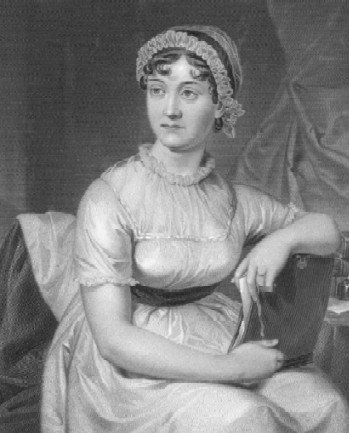Blog Archive
Jane Austen: The Life and Times
On December 16, 1775, the literary world would be forever changed by the birth of a baby girl. The proud parents were Reverend George Austen and Mrs. Cassandra Austen…the baby was to be Jane Austen. There is no doubt that Austen’s rich and colorful childhood in Steventon, Hampshire, filled with childhood plays, stories, and books, influenced and fostered her writing.
Austen began writing her first book at the age of 23; this book was Northanger Abbey, a parody of the Gothic genre, which had steadily been gaining popularity since its inception in 1764 with the publication of Horace Walpole’s The Castle of Otranto.
At the age of 26, Jane and the rest of the Austen family, as a result of her father’s retirement from the Anglican clergy, took up residence in the resort town of Bath. Coincidentally, many of Austen’s novels are fully or partially set in this social venue.
Jane would again relocate after her father’s death in 1805. She, her mother, and her sister Cassandra, who was her ever-present companion, resided in Southampton with her brother Frank and his family. After only a few short years here, the Austen ladies finally settled with Edward Austen, Jane’s brother. Edward possessed an estate in Chawton. This was to be Jane’s final move before her untimely death.
Austen continued writing, eventually producing 6 novels, all of which are staples of classic literature. Austen’s final novel, Persuasion, was published posthumously in 1818. Jane passed away on July 18, 1817 due to failing health.
Despite the fact that Austen was only 41 when she died, she managed to create an impressive and lasting contribution to literature. All of her novels have been transformed into pieces either for television or film. Her novels are still taught in high schools and universities around the world. It is Austen’s ability to not only investigate and probe humanity, but her tact for articulating her finds that has and will sustain her works.
Critics and Northanger Abbey
Northanger Abbey is also seen as didactic novel. Austen not only teaches young ladies what to live like, but she also shows authors and readers alike what a genuinely good book is made of.
Austen also employees free indirect speech, which incorporates several different perspectives into one narrative. This allows for an interesting relationship between the reader, characters, and narrators.
In Northanger Abbey, Austen specifically parodies Ann Radcliffe's The Mysteries of Udolpho, a stock novel in the Gothic genre. Her main character, Catherine Morland, is the exact opposite of the Gothic heroine; she is ugly, boring, and has trouble attracting a man. Catherine also finds herself in situations that are decidedly normal and plain, but she believes are truly supernatural. In these ways, Austen parodies the Gothic genre, but manages to create a unique novel.
The Gothic Genre
Northanger Abbey is a Gothic parody.
Austen composes most of her novels during the Regency Period in
The Eighteenth Century and the literature produced during it are known for Neo-Classical elements, as well as scientific and philosophical content, which is linked with the Enlightenment. The Eighteenth Century also saw the rise of the novel as a major genre in
The Romantic Period was a sharp contrast to the strict rules and guidelines of the Eighteenth Century. Romantic literature features themes of the exotic, nature, and freedom. Rather than looking to reason and logic for wisdom, the Romantics believed that knowledge was gleaned from nature. Some key figures were Wordsworth, Percy Shelley, Coleridge, and Byron.
Gothic literature is typically grouped with Romanticism and is recognized as a subset of it. The Gothic genre, which began with Horace Walpole's The Castle of Otranto, typically includes elements of the supernatural, fantasy, and mystery, but is not merely a sensational genre, as many believe. Gothic fiction places the reader in interesting situations and settings…such as subterraneous chambers and ancient castles. The reader becomes a character within these texts. Gothic pieces tend to use many psychological elements that force readers into examining themselves and their societies. The true source of the Gothic’s horror is its reflexive nature; the Gothic genre is frightening because its reflective narratives force readers to become one with the plot, characters, and narratives, which, in turn, leads to reader to measure him or herself against both the normal and abnormal. The Gothic is about examination, which is its most terrifying aspect.

